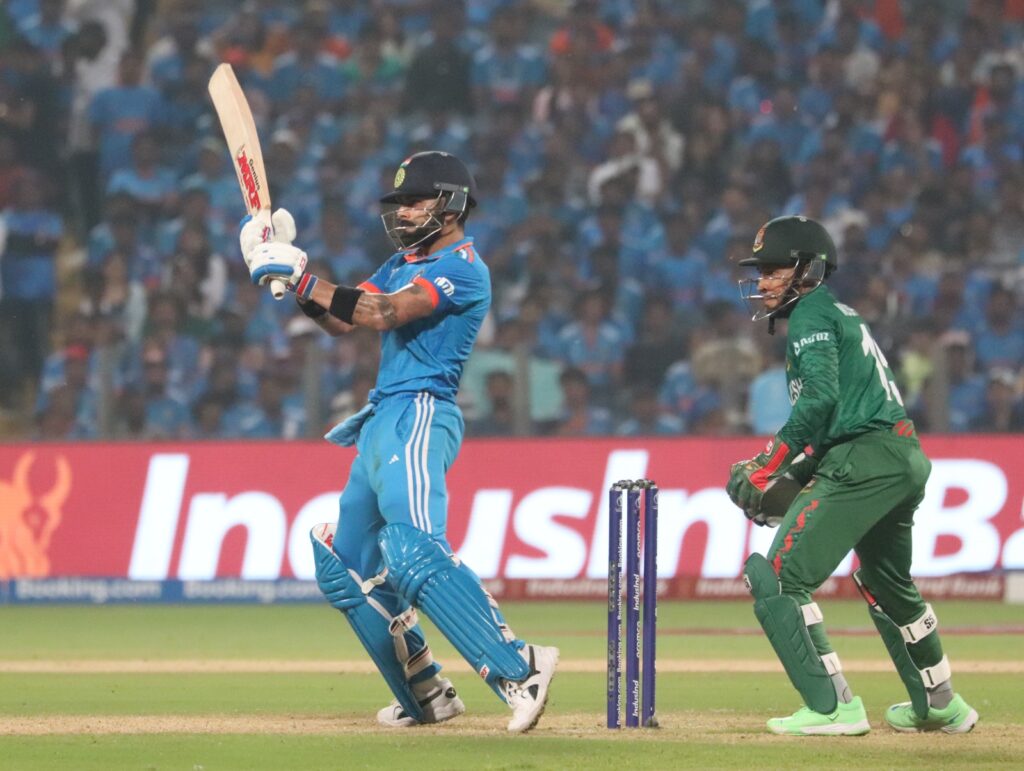
Carrying expectations and responsibilities is something that has fascinated Virat Kohli from his younger days. His comment after the 2011 World Cup win, on Sachin Tendulkar carrying the burden of the nation for two decades and why the rest needed to carry him on their shoulders, instantly resonated with millions.
He knew from that age what this meant and its value in team sports. Not known or foreseen back then was that come another World Cup in India, Kohli would be carrying a similar burden.
He has not led the Indian charge in the first four matches of this World Cup single-handedly. The team has found timely contributions from the other batters. The bowlers have made the task easier by getting out opponents for below-par totals in almost every match. This is an example of textbook teamwork. But even within a system that’s worked so well thus far, it’s still hard to miss the wheel working with the sole objective of driving the team home.
Because India have batted second in all four games, the Kohli effect is more visible and immediate. And this is happening with some inevitability. Regularity is no longer the word. A batter is bound to fail at times in the course of a long tournament. Kohli also will. But until he does, nobody must think that he will trade his wicket for cheap. It’s not about form. This is intent.
This happens when a batter gets into what they call ‘the zone’ these days. It’s a mental state, where willow skills become secondary. Kohli has attuned himself to such a scale that outside noise becomes inaudible to him. He is cut off from distractions and focused only on the ball. Even the bowler is no longer his opponent. He is playing against himself, putting himself in situations where he has to stay until the last runs have been scored.
The precision in execution makes it seem programmed, almost mechanical. No half-measures, no frills if need be, and always no nonsense. He knows that for the first few deliveries, irrespective of the stage of the innings, he has to be careful. No problem if he looks circumspect. Experience has taught him that singles and twos are a batter’s best friends, and his obsession with fitness has made him the world’s best runner between the wickets. In the kind of form he is in, putting bad deliveries in their place is a reflex action. When compelled, he innovates.
It takes good players years to attain this. It has been over a decade since Kohli became a regular in discussions about the world’s best in ODIs. Over the years, the era has expanded. From the best of his time, he most possibly became the best of all, and indisputably the greatest when chasing a target. Nobody has done this job so unfailingly. And seldom have numbers described efficiency so dutifully. His average batting second is 65.24, and his career average is 58. India won chasing 101 times with him in the side. His average in those games is 90.33.
Kohli’s last 10 knocks have fetched 529 runs, and for the most part, they have come with clockwork-like precision. Tendulkar went through phases when he made it appear as if the runs were coming after him instead of him going for them. Kohli seems workmanlike in comparison because he sprints so hard, but there is a similar certainty about the way he strides out to the middle. It’s all-purpose. Runs, he always scored. Now, he means business.
What this will result in as far as the World Cup is concerned is better to watch than guess. What this has resulted in is worth a look. Tendulkar reached his 48th century in a World Cup match, in his 438th innings. Kohli also brought up his 48th hundred in a World Cup game, in his 273rd innings. He is one short of equalling a childhood hero’s world record. Starting now, expectations of another kind will accompany Kohli each time he walks out to bat.




